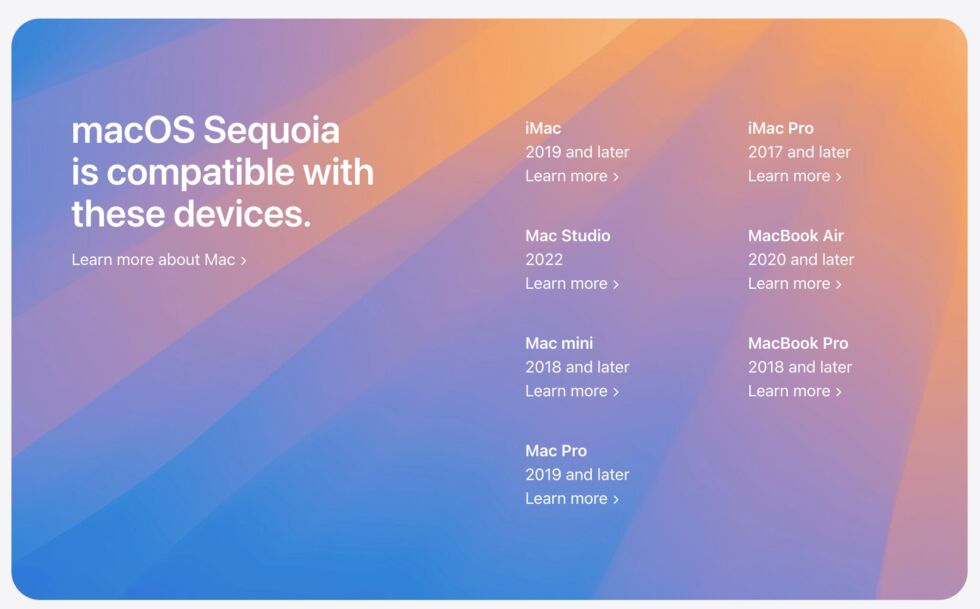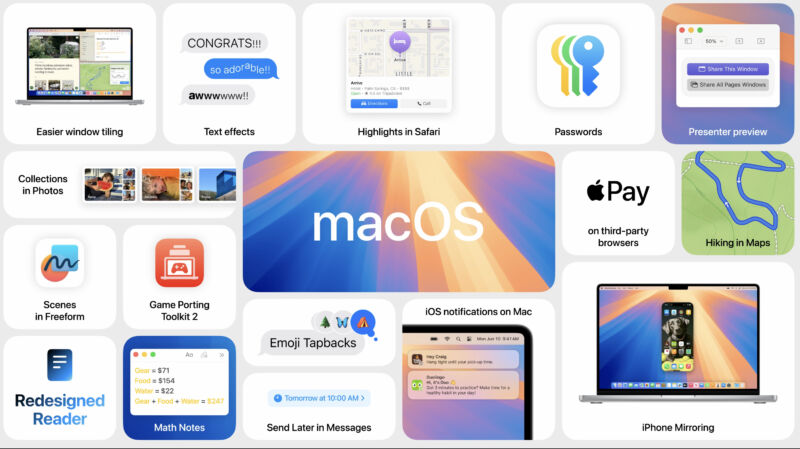Most owners of aging Intel Macs got a bit of a reprieve today when Apple announced macOS 15 Sequoia—this new macOS release will run on the vast majority of the hardware that can currently run macOS 14 Sonoma. Intel Macs released between December of 2017 and 2020 are mostly eligible for the new update, though newer models with Apple Silicon chips will be needed to support some of the new features.
Apple's full support list for Sequoia is as follows:

Generally, all of these Macs include Apple's T2 chip, a co-processor installed in late-model Intel Macs that bridged the gap between the Intel and Apple Silicon eras. There are two exceptions. The biggest is the 2018 MacBook Air, which did come with an Apple T2 but also shipped with a weak dual-core processor and integrated GPU that Apple has apparently decided aren't up to the task of handling Sequoia. The other is the 2019 iMac, which for whatever reason shipped without a T2. Apple says the iPhone mirroring feature does require the T2 chip, so it presumably won't work on the 2019 iMac.
The Apple Intelligence AI features will all require an Apple Silicon Mac—they will run on anything with an M1 chip or newer. Live audio transcription in the Notes app will also require an Apple Silicon chip.
Apple hasn't said exactly when it plans to stop releasing new macOS updates for Intel Macs, but based on its current pace, Sequoia could be the end of the line. Whatever Apple decides to do next year, Intel Macs without an Apple T2 are definitively in the company's rearview mirror.



3175x175(CURRENT).thumb.jpg.b05acc060982b36f5891ba728e6d953c.jpg)
Recommended Comments
There are no comments to display.
Join the conversation
You can post now and register later. If you have an account, sign in now to post with your account.
Note: Your post will require moderator approval before it will be visible.